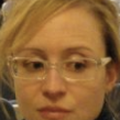Goal
Community Commons is a place to discuss topics and post documents and references relating broadly to medical humanities.
Members
-

Organizer/ Contact
-

Participant
-

Participant
-

Participant
-

Abigail Neely, PhD
Member
-

Member
-

Member
-

Member
-

Member
-

Mark Williams, PhD
Member
-

Neil Vickers, BA DEA MPhil DPhil
Member
- View all
Community Commons Project
Document (pdf) uploaded by Arden Hegele to Community Commons | 2 Apr 2019
The Last Asylum: A Memoir of Madness in Our Times by Barbara Taylor
Free e-book for April from the University of Chicago Press. Friern Mental Hospital in London, once England’s largest psychiatric institution and formerly known as Colney Hatch Lunatic Asylum, closed its doors on April 1, 1993. In our free e-book for April, The Last Asylum: A Memoir of Madness in Our Times, historian Barbara Taylor relates her own illness and her experience as a patient at Friern, a time that coincided with a revolution in the mental health system. The Last Asylum, as memoir and history, opens a window into the twilight days of the Asylum Age. “Taylor provides a gripping (often painful) account of her own experience of madness, a fascinating description of her psychoanalysis, a historical reflection on the role asylums played for inmates and the implications of their demise, and a meditation of the interrelationships between care and cure.”—Los Angeles Review of Books Read The Last Asylum, free in April.
Document (Word) uploaded by Arden Hegele to Community Commons | 9 Mar 2019
Andrew W. Mellon Postdoctoral Fellowship: Chronic Conditions
Andrew W. Mellon Postdoctoral Fellowship: Chronic Conditions The University of Kansas invites applications for an Andrew W. Mellon Postdoctoral Fellowship in conjunction with the University’s 2019-2020 Sawyer Seminar, Chronic Conditions: Knowing, Seeing, and Healing the Body in Global Africa. The 12-month appointment will commence on July 1, 2019 and carries a $50,000 salary for the year, plus benefits. The fellow will be affiliated with the Kansas African Studies Center, the Hall Center for the Humanities, and the Spencer Museum of Art. Specifically, we seek a scholar whose work focuses on a topic that relates to health and medical humanities in African and African-descended communities. For further details, as well as information on how to apply, see: https://sjobs.brassring.com/TGnewUI/Search/home/HomeWithPreLoad?PageType=JobDetails&partnerid=25752&siteid=5541&AReq=13829BR#jobDetails=3749539_5541
Document (pdf) uploaded by Arden Hegele to Community Commons | 29 Jan 2019
History of Science Lecture: Tillmann Taape - The Striped Layman: Visual Culture and the Politics of Vernacular Medical Knowledge in Early German Print
Date: Wednesday, January 30 Time: 6:00 pm - 8:00 pm Location: Fayerweather Hall, The Center for Science and Society, Room 513, Columbia University Speaker: Tillmann Taape, Columbia University Abstract: The visual and rhetorical trope of the ‘striped layman’ began to appear in print in the Southern German lands in the late fifteenth century. Taking as its starting point the numerous woodcut illustrations in the works of the surgeon-apothecary Hieronymus Brunschwig, some of the earliest medical books printed in German, this lecture explores the striped layman as a social and intellectual in-betweener, suggesting how we can read woodcuts which appear interchangeable and merely decorative as visual arguments intervening in contemporary debates about lay education, vernacular print, and medical practice.
Document (pdf) uploaded by Arden Hegele to Community Commons | 29 Jan 2019
History of Science Lecture: Tillmann Taape - The Striped Layman: Visual Culture and the Politics of Vernacular Medical Knowledge in Early German Print
Date: Wednesday, January 30 Time: 6:00 pm - 8:00 pm Location: Fayerweather Hall, The Center for Science and Society, Room 513, Columbia University Speaker: Tillmann Taape, Columbia University Abstract: The visual and rhetorical trope of the ‘striped layman’ began to appear in print in the Southern German lands in the late fifteenth century. Taking as its starting point the numerous woodcut illustrations in the works of the surgeon-apothecary Hieronymus Brunschwig, some of the earliest medical books printed in German, this lecture explores the striped layman as a social and intellectual in-betweener, suggesting how we can read woodcuts which appear interchangeable and merely decorative as visual arguments intervening in contemporary debates about lay education, vernacular print, and medical practice.
Document (Word) uploaded by Arden Hegele to Community Commons | 15 Jan 2019
Call for Papers: Chronicity and Crisis: Time in the Medical Humanities
Call for Papers Montclair State University October 26-27, 2019
Document (pdf) uploaded by Arden Hegele to Community Commons | 8 Jan 2019
Finding the Bar Codes in Our Brains: Using Genetics to Identify the Brain's 100 Billion Neurons
February 7, 2019 | Columbia University People may take for granted their ability to touch their nose and know that they are touching their own face, and not another’s. What someone may not know is that each of the 100 billion neurons in your brain also have this ability of self-recognition. As individual nerve cells, called neurons, grow branches and connect with thousands of other neurons during brain development, their own branches distinguish between themselves and the branches of other neurons — an important adaptation that avoids entanglements. If a neuron cannot do this, it will not form a functional brain circuit — a key aspect of a healthy, functioning brain. In this lecture, Dr. Maniatis plans to discuss the role of protocadherin proteins in brain wiring, which is a complex, but fascinating story. These proteins provide individual neurons with a “barcode” that allows them to distinguish between themselves and other neurons – a complex story of gene regulation, protein structure and function and brain wiring in mice, which has ultimately led to a connection to neuropsychiatric disorders in humans, Tom Maniatis, PhD, is the Isidore S. Edelman Professor of Biochemistry; Chair, Department of Biochemistry and Molecular Biophysics; Principal Investigator at Columbia's Zuckerman Institute. Dr. Maniatis also contributes to clinical medicine by heading Columbia’s precision medicine initiative, created in 2015. This collaboration between Columbia and New York-Presbyterian Hospital aims to understand the relationships between human genetics and disease mechanisms, and to ultimately use this knowledge to personalize treatments for individual patients. Success will require a deep collaboration between early-stage research scientists, such as those at the Zuckerman Institute, and clinicians at Columbia University Medical Center.
Reference added by Arden Hegele to Community Commons | 29 Aug 2018
Rowe J. Successful Aging of Societies, in Daedalus, 2015-4; MIT Press - Journals DOI: 10.1162/daed_a_00325
Reference added by Arden Hegele to Community Commons | 29 Aug 2018
Kutz I. Job and his "doctors": bedside wisdom in the book of Job, 01 Dec 2000; BMJ
Reference added by Arden Hegele to Community Commons | 29 Aug 2018
CUNY Graduate Center. Victorian Medicine and the Medical Imagination, 12 May 2006; Conference Program
Reference added by Arden Hegele to Community Commons | 29 Aug 2018
Whelan T. A Trial of Two Questions, 15 Oct 2002; Journal of Clinical Oncology
